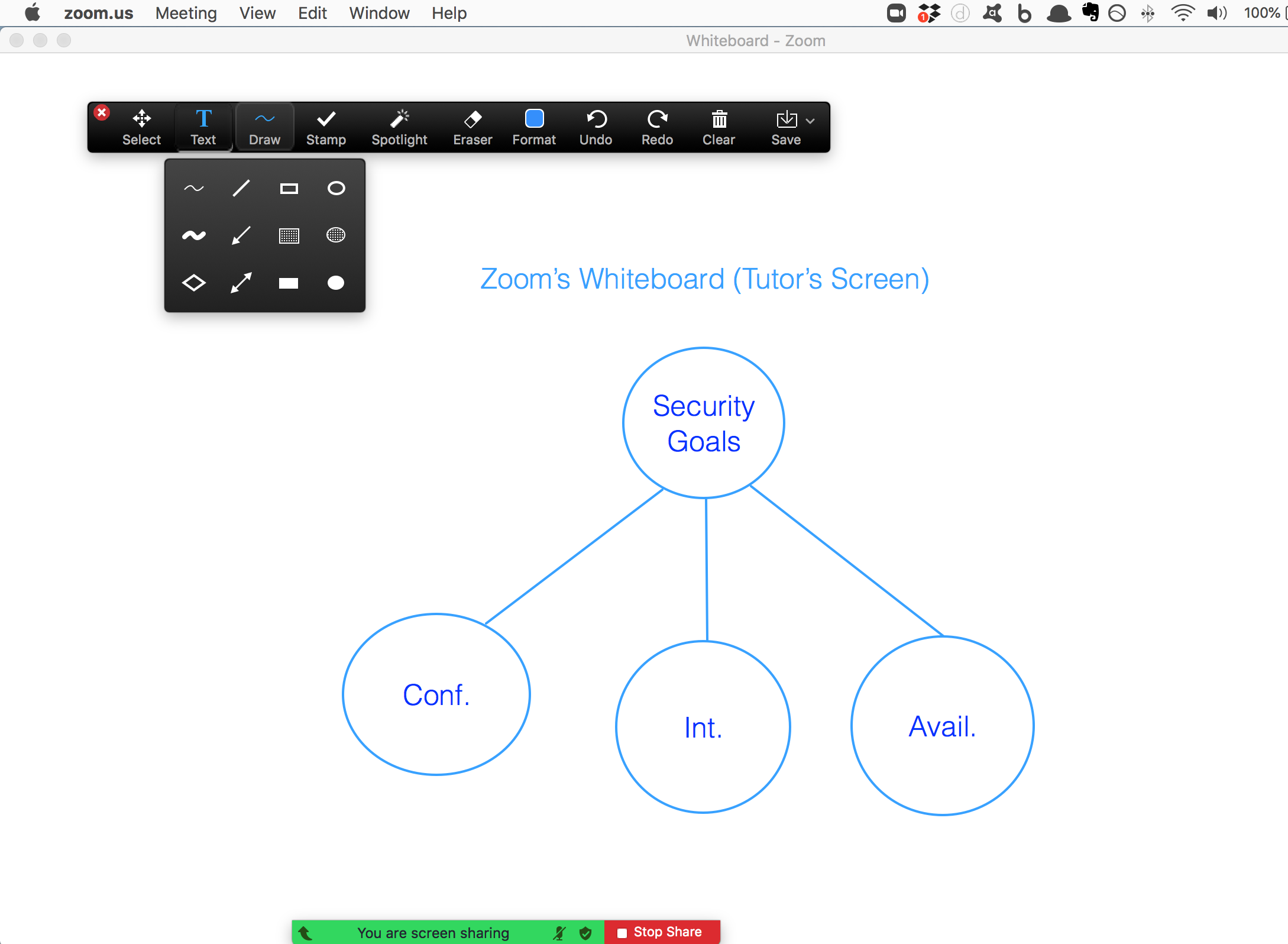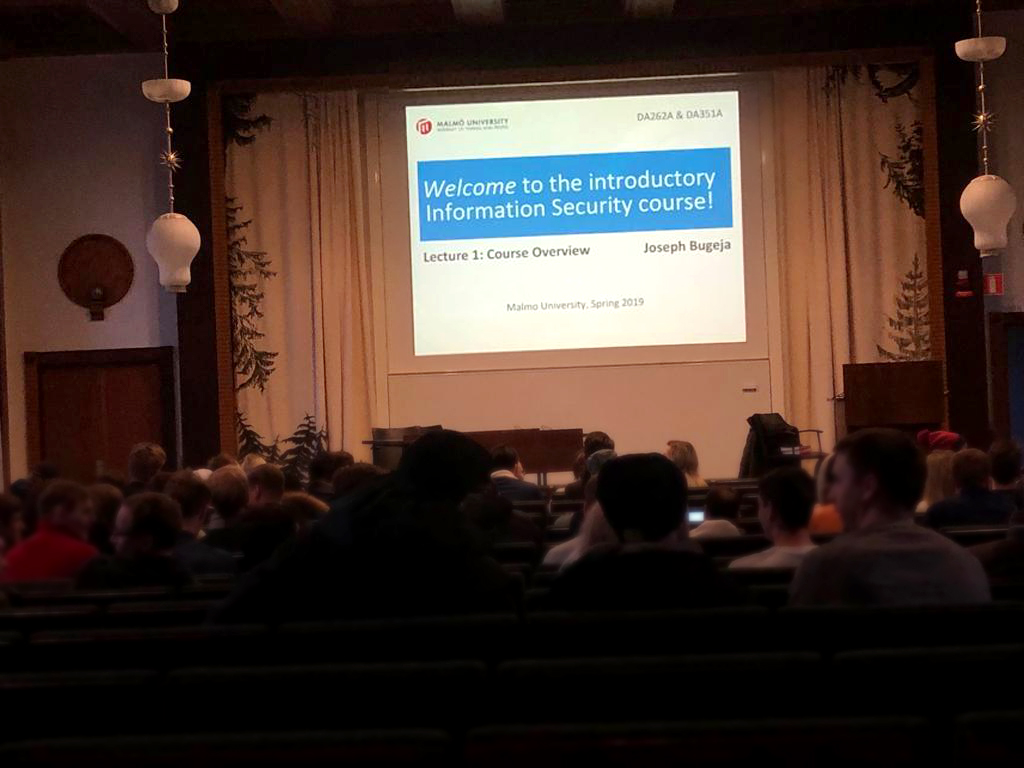On Monday, 18 January, I delivered my first lecture for 2021 in my cybersecurity course at Malmö University. This year, is my 5th year running this course, and I have about 120 students registered for the course. This is a good turnout, and I am happy that many students are keen to learn about cybersecurity. Unlike previous years, the full course, including all its deliverables are going to be held online. So, anyone provided with the link to the lecture and an Internet connection can access the lecture live, potentially from anywhere without the need to commute to university.
When it comes to lectures, I am using Zoom as the main software program to share my slides and interact with students. One of the cool features of Zoom, which is similar to that of a traditional classroom, is its whiteboard. Effectively, Zoom allows the host to share a digital whiteboard that can be used in a similar way to a physical whiteboard but supporting more options. When using Zoom’s whiteboard, I commonly connect my tablet to the meeting and start sketching out using a digital pen. It can be quite challenging to draw a diagram using only a computer mouse.

Sharing the whiteboard on Zoom.
Another nice feature of Zoom, that I started using recently, particularly for managing a workshop, is called “breakout rooms.” This function allows the meeting host to split the participants into smaller groups so that participants can discuss separately in different rooms without disturbing others. I have seen the use of “breakout rooms” in many virtual conferences I have participated in recently. The partitioning into groups can be done automatically or manually, or otherwise, the host can allow participants to select and enter breakout sessions as they please.
As a complement to “breakout rooms” in Zoom, I am also using Discord for supporting students, especially in their lab practicals. Discord is a VoIP, instant messaging, and digital distribution platform, particularly popular with gamers. In our case, we found Discord to be fast and reliable for handling voice and video simultaneously. Its straightforward participation system also makes it ideal for assisting students in their practicals.
In case you want to learn more about my experience with digital teaching, please feel free to get in touch or leave a comment below.


